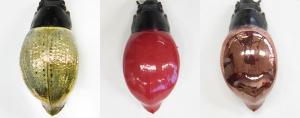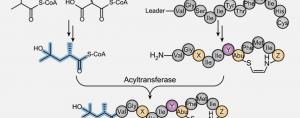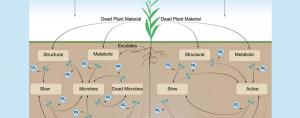News Archive
IGB employees honored with Chancellor's Staff Excellence Award
Maeve Reilly
Sixteen academic professionals and civil service staff members, including two from the IGB, have received the Chancellor’s Staff Excellence Award recognizing exceptional perform
Beetle morphology influences fog droplet collection, researchers find
Shelby Lawson
In coastal arid regions where water sources are scarce, windborne fog droplets play a crucial role in sustaining life.
Alison Bell awarded Guggenheim Fellowship
Jodi Heckel
Two University of Illinois Urbana-Champaign professors have been awarded 2024 Guggenheim Fellowships.
Justine Story
Ananya Sen
Every year, the Carl R. Woese Institute for Genomic Biology is awarded approximately $65 million in sponsored programs funding.
New interdisciplinary named research center established at IGB
Ananya Sen
The Bill and Julie Kellner Center for Neurogenomics, Behavior and Society will bring together a breadth of fields, including genomic biology, neuroscience, the social sciences,
Model suggests how ancient RNA may have gained self-cutting ability essential for life
Shelby Lawson
Scientists have long pondered the beginnings of life on Earth. One theory is that RNA, which is ubiquitous across all domains of life, played a central role in early life.
Can genetic genealogy restore family narratives disrupted by the transatlantic slave trade?
Diana Yates
Some political figures seek to remove references to slavery from the study of American history, adding to the vast knowledge gaps that stem from the transatlantic
Researchers discover a new natural product, a RiPP-fatty acid hybrid molecule
Shelby Lawson
Living organisms produce a diverse suite of natural products which can be harnessed for medicinal and therapeutic purposes.
DayCent-CABBI: New Model Integrates Soil Microbes, Large Perennial Grasses
April Wendling, Anjali Yedavalli
Of all the carbon stored in ecosystems around the world, about half can be found in soils.
Darci Edmonson
Ananya Sen
The annual holiday party at the Carl R. Woese Institute for Genomic Biology is widely considered to be a must-attend event, and for good reason.
July STEM Career Exploration and Symposium at Illinois
Lauren Quinn
Undergraduate research will take center stage on July 26, 2024, during the
Newborn piglets serve as a model for studying influenza
Ananya Sen
Although prevention and treatment strategies are available for influenza, they are not sufficient for vulnerable populations such as young children and newborns.












